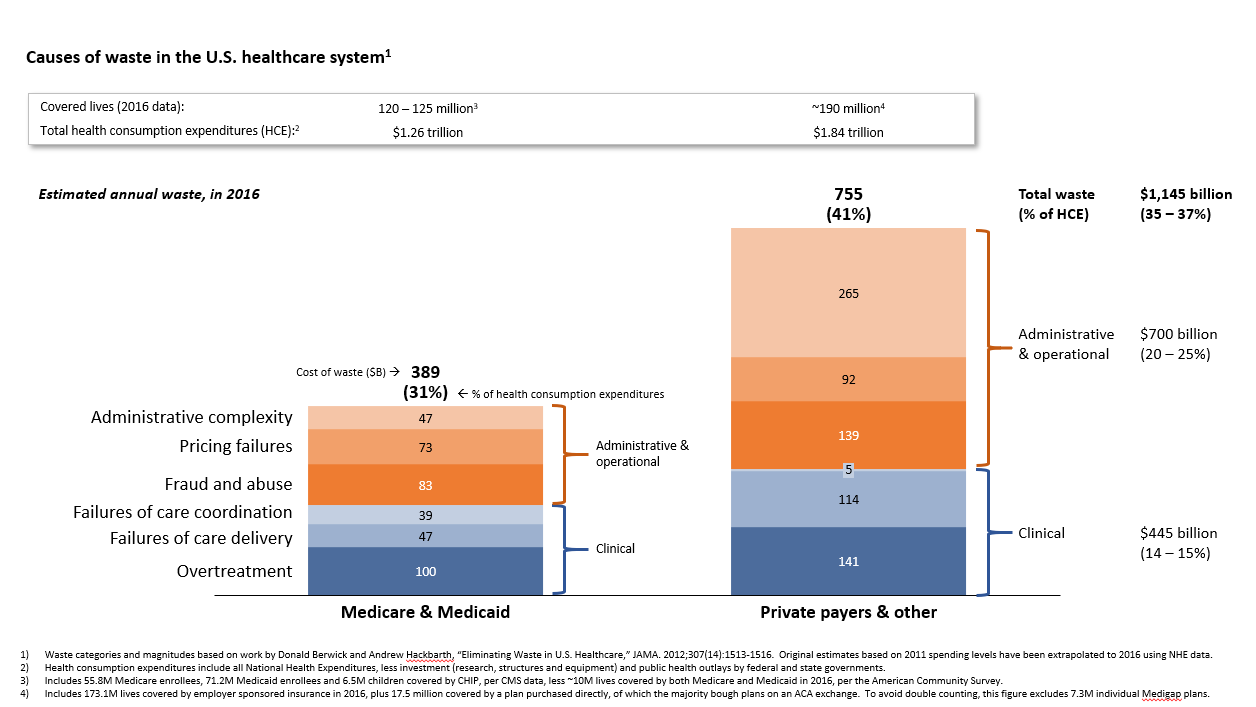Wasted Health Spending: Who’s Picking Up The Tab?
This article originally appeared as a Health Affairs article, co-authored with David Scheinker at SURF Stanford Medicine
As the debate over health care costs continues, wasteful spending — outlays for health services that could be eliminated without harming consumers or care quality — deserves unflagging attention from researchers, clinicians, and policy makers. The Institute of Medicine estimated that waste consumed 30 percent of US health dollars in 2009. Donald M. Berwick and Andrew D. Hackbarth, working from a 2011 baseline, pegged the midpoint of reasonable waste estimates even higher, at 34 percent. A crude extrapolation of these figures, given the steady rise in overall health expenditures, implies that wasted spending now comfortably exceeds $1 trillion annually (see Exhibit 1), a sum that could fund the entire Medicaid program twice over.
Exhibit 1: Causes Of Waste In The US Health Care System
These and similar studies often critique health care as if it were a single $3.3 trillion industry. However, the health sector is a mosaic of smaller markets for particular services or products, each further subdivided by the varying rules, pricing models, and administrative mechanics of a particular provider-payer pair…
Article continues on the Health Affairs blog, and includes several additional graphics.
